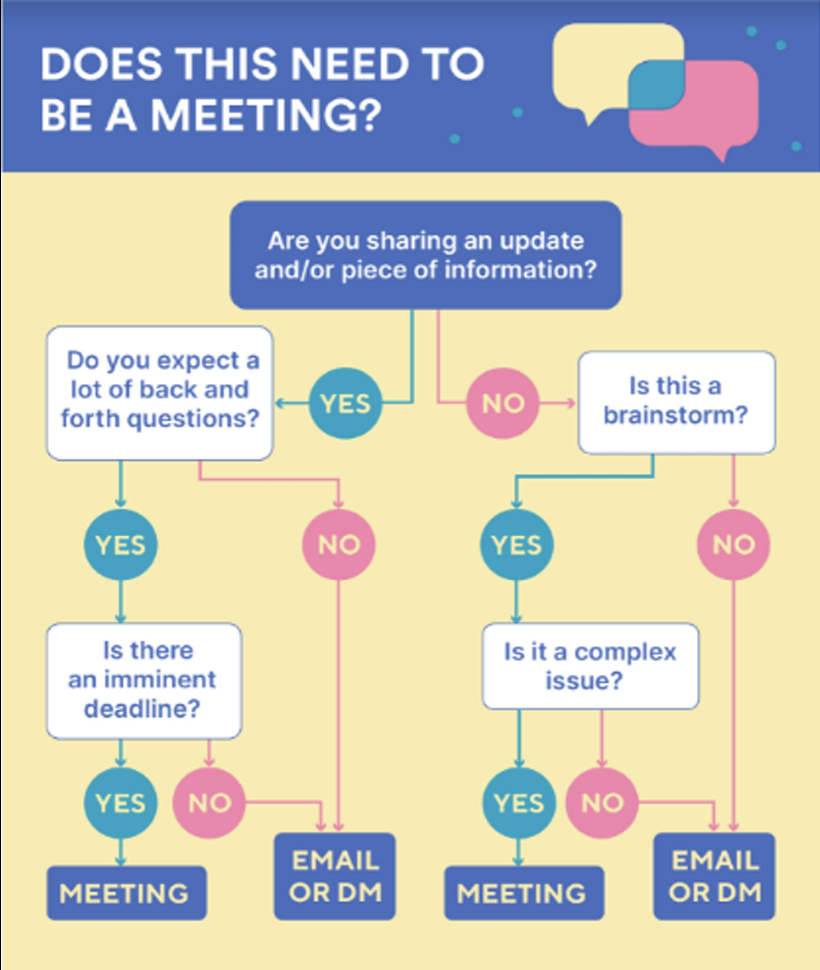Overcoming Meeting Overload
- maggiesalo
- Apr 21
- 2 min read
Struggling with back-to-back meetings? Recent research offers actionable strategies to reclaim time.
Streamlining and Auditing Meetings: Combining and Reducing Meetings
Conducting a regular audit of recurring meetings and eliminating those that do not add value.
Decision-Making Without Meetings: Encouraging asynchronous communication and decision-making through email, Slack, or collaborative platforms can reduce the need for many meetings.
Meeting-Free Days
Setting aside one or more meeting-free days per week has been shown to improve focus, autonomy, and overall engagement. It’s one of the most effective strategies to combat meeting fatigue
Focus Time: Encouraging blocks of uninterrupted focus time helps employees dedicate their energy to deep, meaningful work.
Shorter Meetings and Micro-Breaks
Time-Boxing Meetings: Scheduling shorter meetings (e.g., 25 or 55 minutes instead of the typical 30 or 60) helps to maintain energy levels and avoid meeting fatigue.
Built-In Breaks: Including micro-breaks between meetings is a simple yet effective way to reduce stress and maintain performance.
Walking Meetings, Walk-and-Talks:
This innovative approach breaks the monotony of traditional meetings and has been found to promote creativity and well-being.
Walking meetings can also contribute to physical health and are particularly beneficial for one-on-one discussions.
Protecting Focus Time and Encouraging Strategic Attendance
Critically evaluate the need to attend each meeting and delegate to more appropriate team members when possible.
Psychological Safety: Creating an environment where employees feel comfortable declining meetings or suggesting alternative ways to collaborate without negative consequences.
Focus on Outcome-Driven Meetings:
Shifting the focus from the duration of meetings to the outcomes and actions generated can lead to more efficient use of time.
2022 Survey of Companies found that reducing the number of meetings by 40% resulted in a 71% boost in productivity and a 52% increase in employee satisfaction
Research based on several studies from indeed, HBR, and others.










Comments